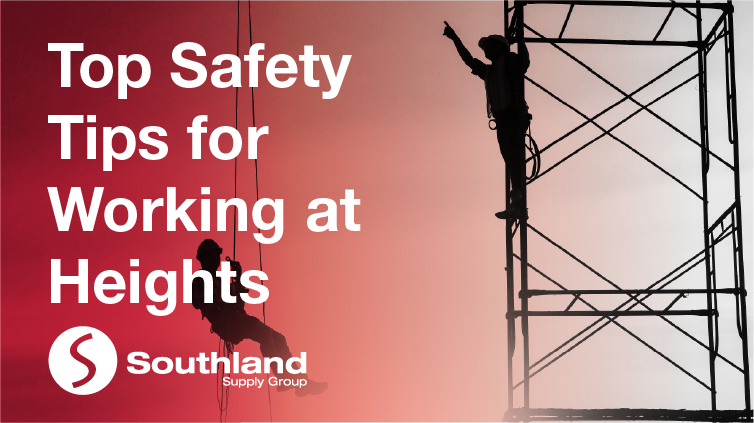Top Safety Tips When Working at Heights

While arm and hand injuries are the most common type of workplace accident by overall number, falls due to working at height is still a major reason of concern for many employers, due to the potential for serious injury and death.
If you or your staff are working at height, you want to make sure that you have the correct fall protection equipment as the consequences of a fall can be devastating.
Hazards Associated with Working at Heights
When working at heights, falling is the most obvious safety hazard. However, there are other hazards associated with working at heights including dropped tools and equipment. A relatively light tool can cause terrible injuries, and even death when dropped from a height onto a person below.
Ladders, scaffolds and other access equipment can be a hazard, particularly when workers using them are not trained or confident, and they can often get themselves in dangerous situations. With proper training and fall protection equipment such as lanyards and a full body harness, you can give them the confidence to complete the tasks safely and effectively.
Activities that are Considered Working at Height Includes:
- Roof work and activities on fragile surfaces
- Work requiring the use of ladders
- Activities near a deep excavation or trench
- Scaffolding work
- Jobs that require being on scissor lifts and other similar Mobile Elevated Work Platforms (MEWPs)
- Maintenance work or any job at an elevation that requires the use of Personal Protective Equipment (PPE) such as a harness
Top 5 Working at Heights Safety Precautions
Below are some top safety tips when working at heights.
1. Identify Potential Hazards
Everyone should always be on the lookout for potential hazards in their work area. For employers, it is important to train your staff to identify potential risks. This will improve job safety and measures can be taken to eliminate minor problems before they become bigger issues.
2. Provide the Proper Fall Protection PPE
Employers should provide PPE when the situation requires it. However, it isn’t enough to provide fall protection equipment. Workers should also be trained in how to use it and how to inspect it before each use.
Do your research and determine what your workers and workplace need. If you have workers welding at heights, then a standard nylon harness may not be suitable; a flame resistant material such as Kevlar might be the best option.
Safety lanyards need to be selected for the job at hand as well. Depending on the height at which you are working, a 1.8m lanyard with a shock absorber device may not protect your worker, as they will likely hit the ground before the shock absorber has fully deployed and stopped them. In many cases, a retractable lanyard might be the best solution.
3. Use Ladders Properly
Ladders are involved in many industrial and workplace accidents simply because people take their use for granted. Before using a ladder, consider whether it is the best tool for the task. Then make sure your employees are trained to properly use a ladder. It’s not as simple as you might think. Lastly, ensure the ladder is secured or tied off to prevent movement.
4. Determine Proper Anchor Points
The anchor points to which Safety lanyards and safety harnesses are attached must be up to the task as the force of an adult falling is significant. Ideally connect to engineered anchor points, or if using other beams or anchor point, have an engineer inspect and sign off that it will be suitable for use.
5. Regularly Inspect Equipment
Perform regular inspections to ensure that your equipment is working correctly. Prestart inspections are especially important when the tool or piece of personal protective equipment is used for working at heights.
Safely working at height requires proper training, focus, and the right safety equipment to be in place. Taking shortcuts and becoming complacent can lead to serious injury or fatal accidents. To see a complete list of fall protection equipment, visit our website at https://www.southland.com.au/.
